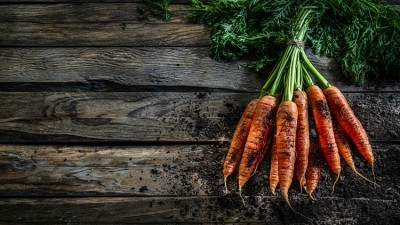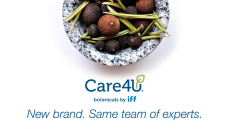Veg-derived phytochemical tackles antibiotic resistant pathogens, says study team

Researchers identify 3,3'-diindolylmethane (DIM) found in cabbage, cauliflower and broccoli as the phytochemical said to exhibit chemotherapeutic and anti-inflammatory effects.
The Israeli and Cypriot team also note its ability to interfere with the formation and destruction of mature biofilms of several pathogenic bacterial strains present in chronic infections.
“Our findings show promise for other avenues of research in addition to known classes of antibiotics," comments Ariel Kushmaro, study lead and Professor of Microbiology at Ben Gurion University in Southern Israel.
Study details
The research consisted of a series of in vitro assays on major Gram-negative pathogens that include in vivo porcine (pig) wound studies and in silico experiments.
Here, the team show that biofilm formation of two bacterial pathogens Acinetobacter baumannii and Pseudomonas aeruginosa was inhibited respectively by 65% and 70%.
Combining the antibiotic tobramycin with DIM boosted inhibition to 94% of the P. aeruginosa biofilm.
The DIM-based formulation, evaluated for its wound-healing efficacy on P. aeruginosa-infected wounds, showed a reduction in its bacterial bioburden, and wound size, the team writes.
Gene expression profiles revealed shifts in virulence and biofilm-associated genes with further analysis demonstrating the downregulation of 14 virulence-associated super-regulators.
‘Eliminating biofilm-related infections’
“Based on its anti-biofilm properties, which affect diverse strains of bacteria, the results of this study suggest that DIM is potentially suitable for attenuating a wide range of bacterial infections,” the team concludes.
“Further explorations of such novel applications are needed in terms of dosage and toxicity, resistance gaining, and methods developments in evaluating the success of this treatment strategy.
“Such studies will reveal the extent to which this novel approach can be exploited to prevent, inhibit, and destroy the ability of infectious bacteria to form biofilms, and as such, bring us closer to eliminating biofilm-related infections.”
Antiviral and antifungal abilities
3, 3′-diindolylmethane (DIM) is one of the best-characterised and most abundant bioactive compounds produced from the crucifers family.
In addition to chemotherapeutic and anti-inflammatory activity, studies also point to its antiviral, antifungal and antileishmanial abilities. The bioactive compound is also said to play a role in attenuating arthritis.
Natural agents containing DIM produced by tunicate and sponge, have been shown to possess anti-biofilm activity.
Similarly, the plant-derived indole, I3C, has been shown to bind to the aromatic hydrocarbon receptor (AhR) found in most tissues, including the gut.
Here, it decreases colitis by reducing microbial dysbiosis and boosting the abundance of butyrate-producing Gram-positive bacteria.
Source: Pharmaceutics
Published online: doi.org/10.3390/pharmaceutics14050967
“Anti-Virulence Activity of 3,3′-Diindolylmethane (DIM): A Bioactive Cruciferous Phytochemical with Accelerated Wound Healing Benefits.”
Authors: Golberg, K et al.















